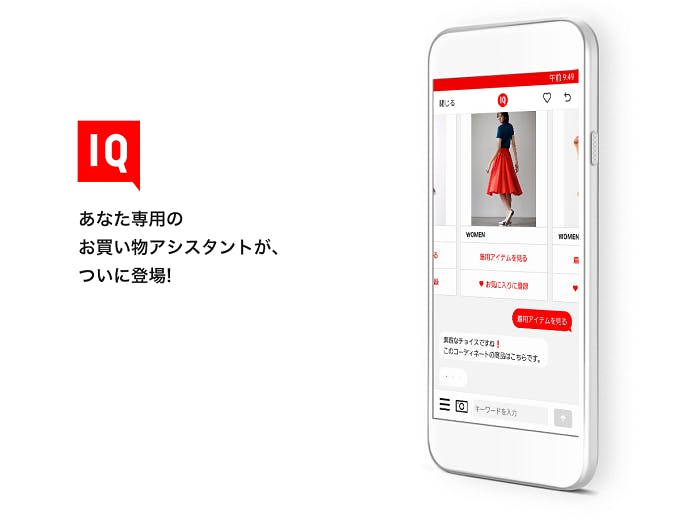With multiple facets to optimise for higher conversions, ecommerce brands often treat on-site search as an afterthought. As a result, 72% of desktop ecommerce search engines cannot return relevant results for queries containing synonyms, misspelt words or searches using a model number.
By failing to address the search experience, you are losing customers, especially when you consider that shoppers who use the on-site search bar reportedly have a higher conversion rate and average order value.
Machine learning may be hyped technology but it’s already making a major difference to the on-site product search experience. Here are three examples demonstrating how progressive ecommerce brands are succeeding with it.
1) Improved product search for misspelt words
Commonly misspelt words are a lost revenue opportunity for ecommerce companies. On average, 25% of all ecommerce search queries are misspelt, and the modern shoppers won’t take the blame for typing the wrong command. The majority will just abandon the website in two minutes or less if they can’t find what they were looking for (2013 figures – one might expect this time to have since decreased further).
Zalando decided to tackle this problem using deep learning. To improve the search experience, the team developed and trained a neural network, resilient to common misspellings in several languages. The network can successfully cope with issues such as adding, deleting or replacing characters in two languages – English and German.


With the help of machine learning, Zalando can now parse 300,000 products in two seconds and deliver on-point product suggestions despite inaccuracies.
2) Voice shopping experience guided by AI
Japanese retailer Uniqlo is known for its easy-to-wear and easy-to-buy designs. Now they are extending their signature ‘simpleness’ to the digital realm. The Uniqlo IQ app, launched in the summer for Japanese customers, is a new voice-activated digital concierge service for shoppers.

You can interact with the app using voice, text or images. The intelligent assistant will suggest personalised looks based on occasion, past purchases, or even daily horoscopes. Users are then prompted to purchase suggested looks online or directed to the nearest store with available inventory.
Uniqlo IQ can also be summoned via Google Assistant. To create a fully guided voice experience, the retailer worked closely with Google and the company’s proprietary technology.
Voice commerce is predicted to become a $40 billion industry by 2020, up from $2 billion last year across the US and the UK. This major increase may be driven by the adoption of smart speakers at home and increased usage of voice assistants embedded in cars. Commuter commerce is another emerging $20 billion opportunity for brands, ready to connect with drivers ‘on the go’ using voice apps.
Getting to Grips with Voice Search
Uniqlo isn’t the only retailer who’s actively investing in a seamless voice search experience. Customers in the UK and US can also call Asos’ Enki Chatbot using the Google Assistant app or Google Home Speaker to browse the 85,000 products on the website and cherry-pick personalised suggestions.
3) Camera-powered visual search
Social media has fuelled the growth of the “As Seen On” shopping experience. Millennials now want to snatch the same items they spotted on someone else online or in-person.
Boohoo, an apparel brand targeting image-oriented Millennial and Gen Z consumers, clearly took note. The company recently partnered with Syte – a startup offering image recognition technology for retailers – to add visual search functionality to their mobile website. The Camera Button added to the search bar, allows users to upload their pictures and discover the most visually similar products in stock. Shoppers are then presented with a selection of relevant products, additionally populated with even more similar styles and “Shop the Look” curated picks.

The early tests showed that shoppers who used the “View Similar” functionality through the Camera app had a conversion rate over 100% higher than those who didn’t use it. BooHoo also reported a 135% increase in pages viewed per session and a 12% increase in average order value. Lately, Boohoo has been at the forefront of ecommerce innovation, launching several other features that drive sales.
In fact, more and more fast-fashion retailers are now leveraging visual search to gain an edge. Forever 21, Asos and H&M also launched new visual search tools on their websites. Shoppers no longer need to think what ‘cold shoulder’ means – they can just share a picture and instantly view the styles they want.
Visual Search: A Guide for Marketers
Tech companies are also increasingly investing in improved visual search functionality. In September 2018, Google announced the integration of AI-driven Lens into search results. Their aim is to further assist users with finding the products they want, discover styling and decor ideas or browse DIY projects. Pinterest introduced Lenses in 2017 – a camera search for idea recommendation. As of February 2018, 600 million visual searches are performed using Lenses. Target was among the first brands to allow Pinterest users to search their catalogue using related products in the real world. Walmart is also said to be working on developing its own visual search technology in-house.

Comments